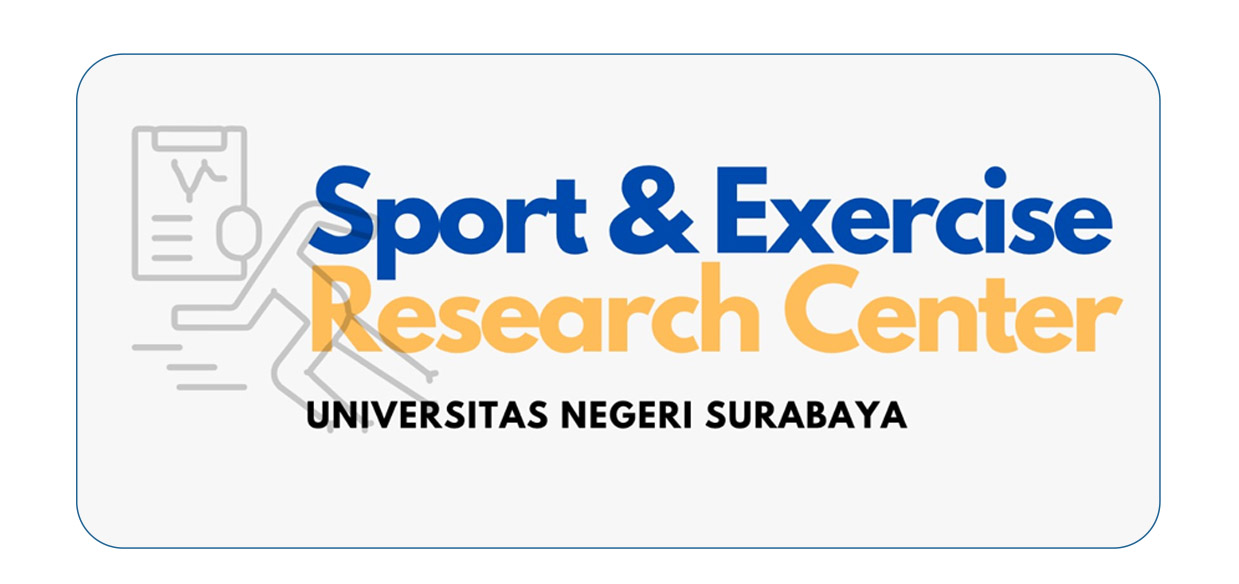Latihan Fisik Meningkatkan Kadar Insulin-Like Growth Factor-1 (IGF-1)
DOI:
https://doi.org/10.26740/jossae.v6n1.p46-56Keywords:
IGF-1, physical activity, muscle massIGF-1, muscle massAbstract
This article aims to determine the effect of physical activity in increasing insulin-like growth factor 1 (IGF-1 levels. The method used is a systematic literature review with public databases, direct science, national and international journals with vulnerabilities in 2015-2020. The results showed that physical activity could increase IGF-1 levels. IGF-1 levels are closely related to muscle building, muscle mass, and muscle strength. IGF 1 levels that occur during physical activity can reduce sarcopenia, muscle weakness, and obesity. Given the
important role physical activity plays in increasing IGF-1 levels, this article looks at how physical activity affects the increase in IGF-1 levels. It can be concluded that physical activity can increase IGF-1 levels as one of the factors associated with increased muscle mass.
References
https://doi.org/10.1186/s12967-015-0762-z
Amer, N. M., Modesto, M. J., Duarte, C., Santos, D., Erichsen, O., Mascarenhas, L. P. G., ¦ Lacerda, L. De. (2018). Resistance exercise alone improves muscle strength in growth hormone deficient males in the transition phase. 31(8), 887894.
Arazi, H., Khanmohammadi, A., Asadi, A., & Haff, G. G. (2018). The effect of resistance training set configuration on strength, power, and hormonal adaptation in female volleyball players. Applied
Physiology, Nutrition and Metabolism, 43(2), 154164. https://doi.org/10.1139/apnm-2017-0327
Barbé, C., Kalista, S., Loumaye, A., Ritvos, O., Lause, P., Ferracin, B., & Thissen, J. P. (2015). Role of IGF-I in follistatin-induced skeletal muscle hypertrophy. American Journal of Physiology - Endocrinology and Metabolism, 309(6), E557E567. https://doi.org/10.1152/ajpendo.00098.2015
Chen, H. T., Chung, Y. C., Chen, Y. J., Ho, S. Y., & Wu, H. J. (2017). Effects of Different Types of Exercise on Body Composition, Muscle Strength, and IGF-1 in the Elderly with Sarcopenic Obesity.
Journal of the American Geriatrics Society, 65(4), 827832.
https://doi.org/10.1111/jgs.14722
Clemmons, D. R. (2012). Metabolic Actions of IGF-I in Normal Physiology and Diabetes. Endocrinology and Metabolism Clinics of North America. https://doi.org/10.1007/978-3-642-236358_30
Deemer, S. E., Castleberry, T. J., Irvine, C., Newmire, D. E., Oldham, M., King, G. A., ¦ Biggerstaff, K. D. (2018). Pilot study: an acute bout of high intensity interval exercise increases 12.5 h GH secretion. Physiological Reports, 6(2), 110. https://doi.org/10.14814/phy2.13563
Hargreaves, M. (2015). Exercise and Gene Expression. Progress in Molecular Biology and Translational Science, 135, 457469. https://doi.org/10.1016/bs.pmbts.2015.07.006
Hejazi, S. M. (2017). Effects of high intensity interval training on plasma levels of growth hormone and insulin like growth factor-1 in healthy males. International Journal of Medical Research & Health Sciences, 6(4), 5559.
Jeon, Y. K., & Ha, C. H. (2015). Expression of brain-derived neurotrophic factor, IGF-1 and cortisol elicited by regular aerobic exercise in adolescents. Journal of Physical Therapy Science, 27(3), 737741.
https://doi.org/10.1589/jpts.27.737
Jiang, Q., Lou, K., Hou, L., Lu, Y., Sun, L., Tan, S. C., ¦ Pang, S. (2020). The effect of resistance training on serum insulin-like growth factor 1(IGF-1): A systematic review and meta-analysis. Complementary Therapies in Medicine. https://doi.org/10.1016/j.ctim.2020.102360
Kang, D. wang, Bressel, E., & Kim, D. yeon. (2020). Effects of aquatic exercise on insulin-like growth factor-1, brain-derived neurotrophic factor, vascular endothelial growth factor, and cognitive function in elderly women. Experimental Gerontology, 132(September 2019), 110842.
https://doi.org/10.1016/j.exger.2020.110842
Kraemer, R. R., Durand, R. J., Acevedo, E. O., Johnson, L. G., Kraemer, G. R., Hebert, E. P., & Castracane, V. D. (2004). Rigorous running increases growth hormone and insulin-like growth factor-I without altering ghrelin. Experimental Biology and Medicine (Maywood, N.J.), 229(3), 240 246. https://doi.org/10.1177/153537020422900304
Lozier, N. R., Kopchick, J. J., & De Lacalle, S. (2018). Relative contributions of myostatin and the GH/IGF-1 axis in body composition and muscle strength. Frontiers in Physiology, 9(NOV), 16.
https://doi.org/10.3389/fphys.2018.01418
Maass, A., Düzel, S., Brigadski, T., Goerke, M., Becke, A., Sobieray, U., ¦ Düzel, E. (2016). Relationships of peripheral IGF-1, VEGF and BDNF levels to exercise-related changes in memory, hippocampal perfusion and volumes in older adults. NeuroImage, 131, 142154.
https://doi.org/10.1016/j.neuroimage.2015.10.084
Miyamoto-Mikami, E., Tsuji, K., Horii, N., Hasegawa, N., Fujie, S., Homma, T., ¦ Iemitsu, M. (2018). Gene expression profile of muscle adaptation to high-intensity intermittent exercise training in young men. Scientific Reports, 8(1), 16811. https://doi.org/10.1038/s41598-018-35115-x
Mohammadjafari, H., Arazi, H., Nemati, N., Bagherpoor, T., & Suzuki, K. (2019). Acute effects of resistance exercise and the use of GH or IGF-1 hormones on oxidative stress and antioxidant markers in bodybuilders. Antioxidants, 8(12), 18. https://doi.org/10.3390/antiox8120587
Nishad, R., Mukhi, D., Menon, R. K., & Pasupulati, A. K. (2018). Growth Hormone and Metabolic Homeostasis. European Medical Journal, 6(1), 7887.
Nunes, P. R. P., Barcelos, L. C., Oliveira, A. A., Furlanetto, R., Martins, F. M., Resende, E. A. M. R., & Orsatti, F. L. (2019). Muscular Strength Adaptations and Hormonal Responses After Two Different Multiple-Set Protocols of Resistance Training in Postmenopausal Women. Journal of
Strength and Conditioning Research, 33(5), 12761285.
https://doi.org/10.1519/JSC.0000000000001788
Pang, A. L.-Y., & Chan, W.-Y. (2010). Chapter 22 - Molecular Basis of Diseases of the Endocrine System (W. B. Coleman & G. J. B. T.-E. C. in M. P. Tsongalis, Eds.). San Diego: Academic Press.
https://doi.org/https://doi.org/10.1016/B978-0-12-374418-0.00022-0
Schiaffino, S., & Mammucari, C. (2011). Regulation of skeletal muscle growth by the IGF1-Akt/PKB pathway: Insights from genetic models. Skeletal Muscle, 1(1), 114.
https://doi.org/10.1186/2044-5040-1-4
Schwarz, N. A., McKinley-Barnard, S. K., Spillane, M. B., Andre, T. L., Gann, J. J., & Willoughby, D. S. (2016). Effect of resistance exercise intensity on the expression of PGC-1α isoforms and the anabolic and catabolic signalling mediators, IGF-1 and myostatin, in human skeletal muscle. Applied Physiology, Nutrition and Metabolism. https://doi.org/10.1139/apnm-2016-0047
Sellami, M., Dhahbi, W., Hayes, L. D., Padulo, J., Rhibi, F., Djemail, H., & Chaouachi, A. (2017). Combined sprint and resistance training abrogates age differences in somatotropic hormones.
PLoS ONE, 12(8), 119. https://doi.org/10.1371/journal.pone.0183184
Sheikholeslami-Vatani, D., Ahmadi, S., & Salavati, R. (2016). Comparison of the effects of resistance exercise orders on number of repetitions, serum IGF-1, testosterone and cortisol levels in normal-weight and obese men. Asian Journal of Sports Medicine, 7(1), 17.
https://doi.org/10.5812/asjsm.30503
Stein, A. M., Martins, T., Silva, V., Gomes, F., Coelho, D. M., Arantes, F. J., ¦ Santos-galduróz, R. F. (2018). A systematic review of experimental studies in the elderly. 12(2), 114122.
https://doi.org/10.1590/1980-57642018dn12-020003
Thankamony, A., Capalbo, D., Jonsson, P. J., Simpson, H. L., & Dunger, D. B. (2016). Predictors of Insulin-Like Growth Factor-I Responses to Growth Hormone Replacement in Young Adults with Growth Hormone Deficiency. Hormone Research in Paediatrics, 85(6), 379388.
https://doi.org/10.1159/000445832
Tsai, C. L., Wang, C. H., Pan, C. Y., & Chen, F. C. (2015). The effects of long-term resistance exercise on the relationship between neurocognitive performance and GH, IGF-1, and homocysteine levels in the elderly. Frontiers in Behavioral Neuroscience, 9(FEB), 112.
https://doi.org/10.3389/fnbeh.2015.00023
Velloso, C. P. (2008). Regulation of muscle mass by growth hormone and. (October 2007), 557568.
Vitale, G., Pellegrino, G., Vollery, M., & Hofland, L. J. (2019). ROLE of IGF-1 System in the Modulation of Longevity: Controversies and New Insights From a Centenarians Perspective.
Frontiers in Endocrinology , Vol. 10, p. 27. Wang, Y., Zhang, H., Cao, M., Kong, L., & Ge, X. (2019). Analysis of the value and correlation of IGF‘1 with GH and IGFBP‘3 in the diagnosis of dwarfism. Experimental and Therapeutic Medicine.
https://doi.org/10.3892/etm.2019.7393
Zaid, S. Y. A., Ismail, S. M., Mohamed, M. E., & Aly, F. A. (2018). Efficacy of Moderate Aerobic Training on Insulin Like Growth Factor and Functional Capacity in Elderly. The Medical Journal of Cairo University, 86(2), 903908. https://doi.org/10.21608/mjcu.2018.55582
Downloads
Published
How to Cite
Issue
Section
 Abstract views: 986
,
Abstract views: 986
, PDF Downloads: 3942
PDF Downloads: 3942








